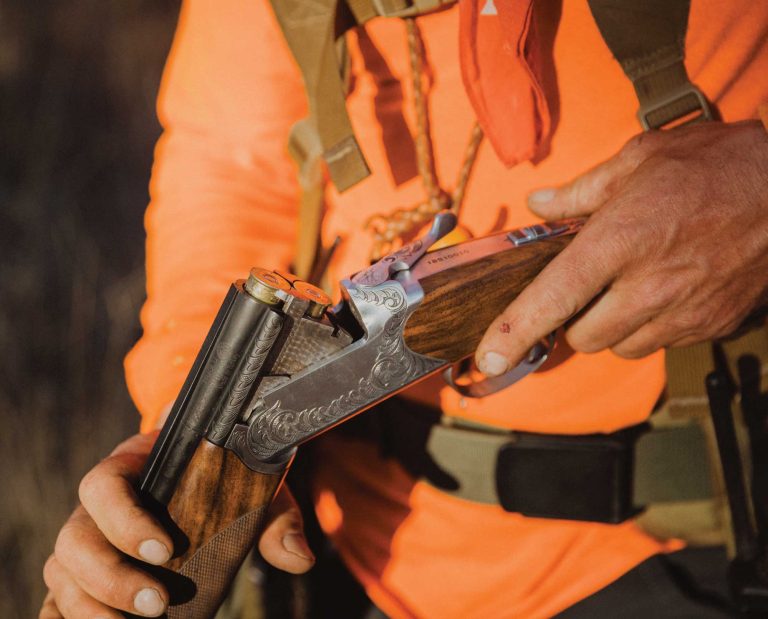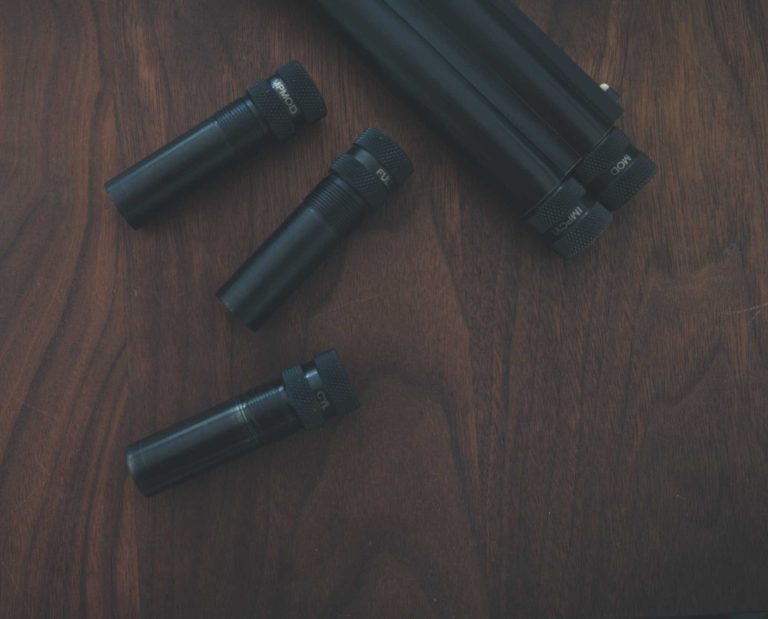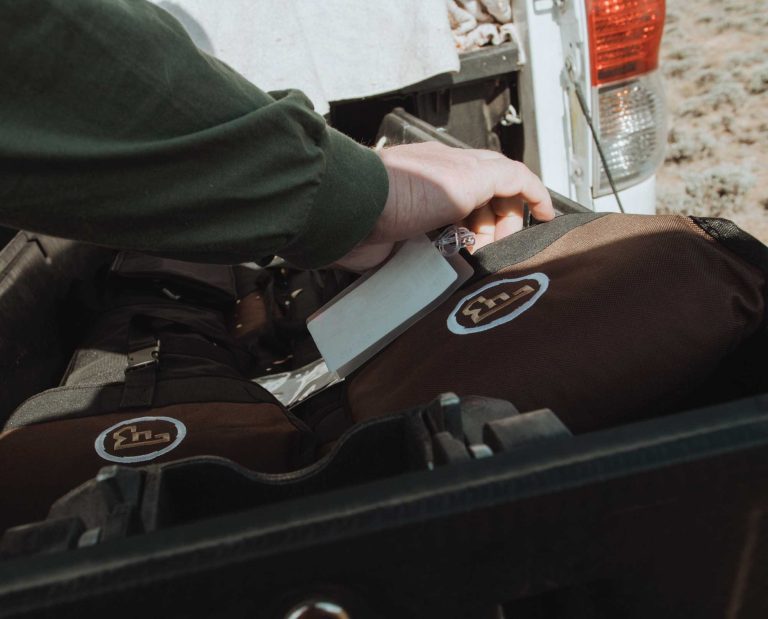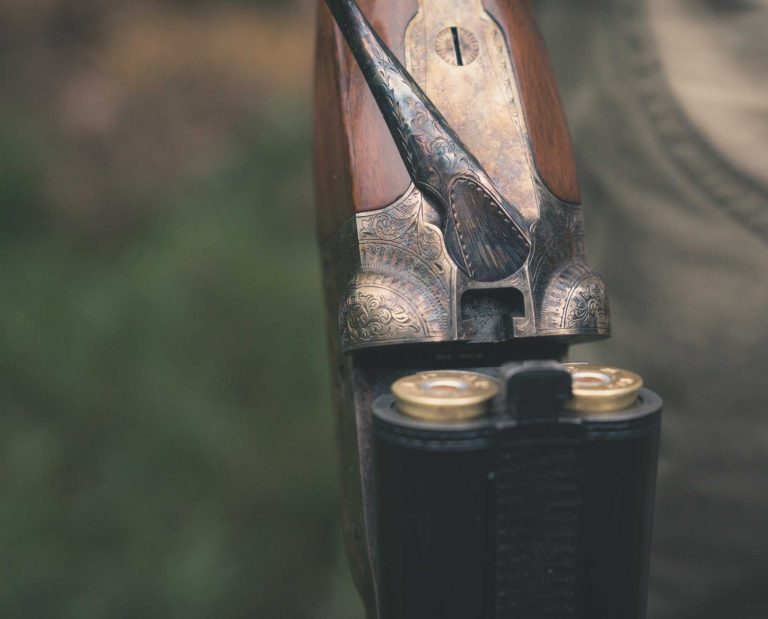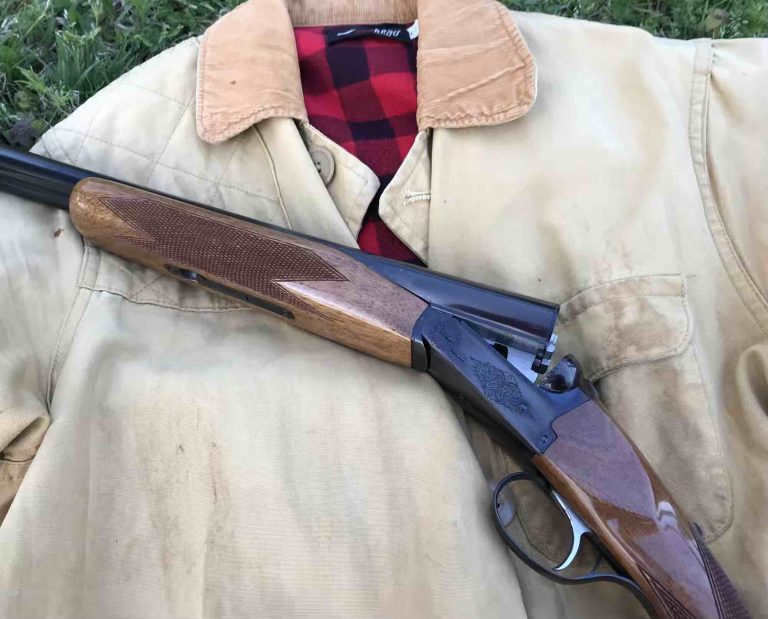The Fabarm Autumn: A Shotgun Overview
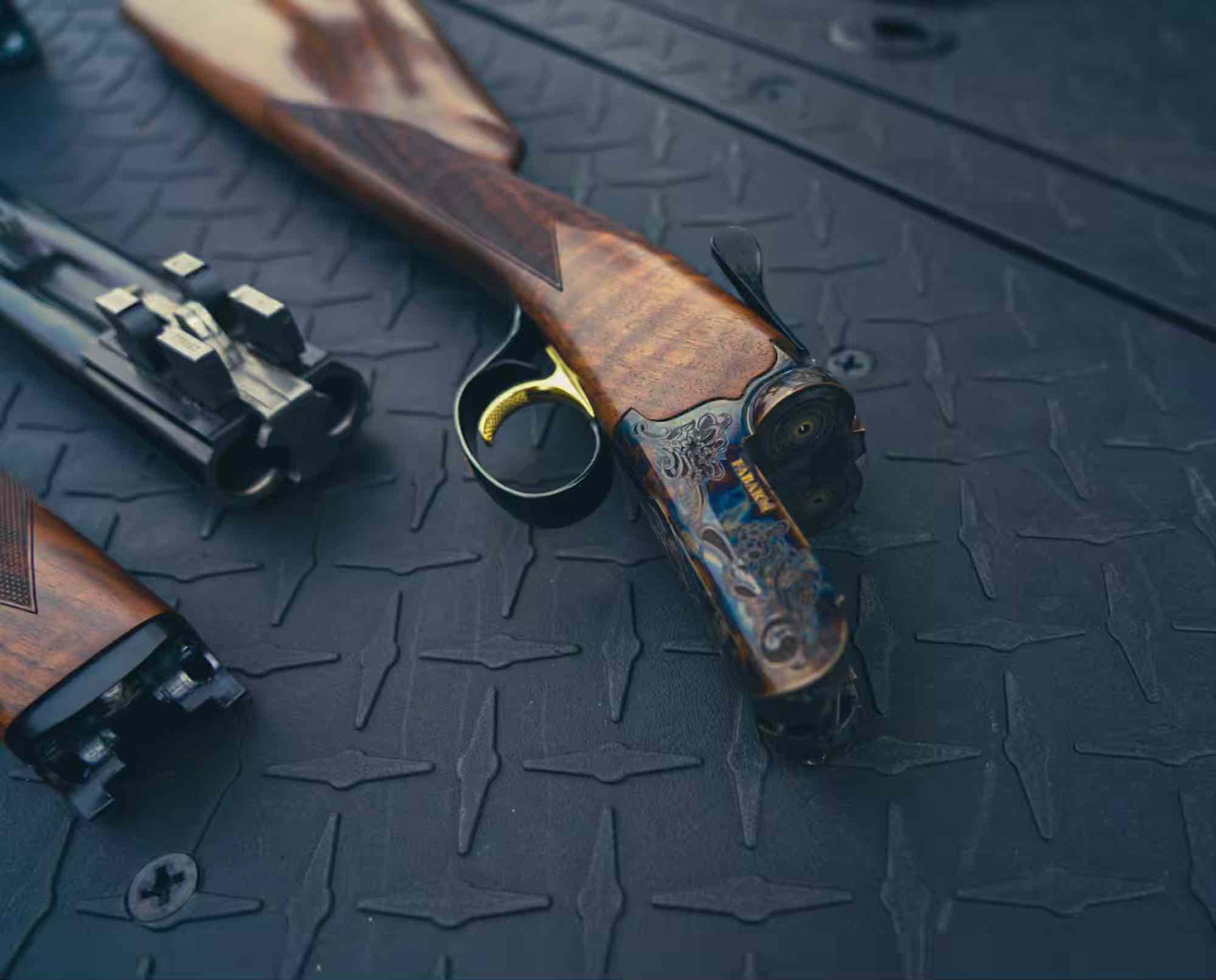
Tracing a hunter’s journey from an unwieldy single-shot 12-gauge through a variety of classic shotguns
My very first gun was a single-shot 12-gauge for no other reason than some unspoken custom that dictated that everyone should begin their shooting career with one. The theory was that one shot would make the shooter really focus on the target; instead, I learned to quickly reload. The only real value that gun had was teaching me what proper gun balance and weight shouldn’t be. What a miserable weapon and, worse, it wasn’t even the right tool for the job, if wingshooting was part of the plan. The frame was too light to absorb the recoil that a 12-gauge heavy duck load could produce and the recoil pad would leave impressive bruises on my shoulder.
Moving to the classic, economical Remington 870 Express
I soon left the single-shot and moved to the 1990s version of the Remington 870 Express. It had minimal, if any, hand-finishing once the parts were removed from the mill. I assume this is where the “express” part of the name came from. Hand-finishing takes time and time is money, so they passed the savings on to the consumer—like me, who was absolutely thrilled to be moving away from the accursed single-shot despite the rough finish of the 870 that rusted faster than Detroit steel.
Besides adding two shells to my volley, the 870 had some virtue. You couldn’t hurt it; it was versatile enough for hunting all manner of game, including turkeys and even deer if you wanted to use slugs or buck shot. Its utilitarian nature reached further than hunting, as I once used my 870’s barrel as a breaker bar to move seized lug nuts when we had a flat out in the middle of nowhere. As far as balance and handling goes, it was on the far end of the spectrum of acceptability. Once you got it moving, that long, heavy barrel kept it moving—which was a lesson in physics that I held onto as I decided to move up in the bird gun world.
Graduating to side-by-side shotguns
Everyone who was anyone in the “upland scene” used a gun with two barrels instead of one. Writers pitched the versatility of two barrels and two chokes; photographers and painters really sold the sleek lines and classic nature of the side-by-side in sporting magazines. At some point, I decided I would never know what true happiness was until my bird gun was a SxS. Make or model wasn’t important; proper handling was an idea that I thought I knew more about than I really did. I just needed a SxS and, frankly, any would do.
I tried hocking my battered, not-so-old 870, but it turns out it was so incredibly valuable that the pawn broker said it was priceless and refused to take it. I spent the summer working the garbage line of a pea-canning factory to save up enough money for the first SxS I could afford. This came in the form of a Savage Fox 16-gauge, not to be confused with a Sterlingworth. Hindsight being 20/20, it wasn’t a bad transition from the telephone pole-like nature of the 870. The Savage Fox was a thick, chunky gun with a heavy beaver-tail fore end to steer the large 28-inch barrels and pistol grip for repeatability in hand placement. To save weight (because if you are trying to save weight, why not do so at the cost of one of the most important parts), the action was made of an aluminum alloy with deep, simplistic scrolls pressed into the side and a lightly acid-etched duck hunting scene on the bottom. At the time, I hadn’t seen a gun more beautiful and I happily shoved steel shot shells down the pipes for years, even though gun experts would tell you that doing so would cause the end of days.
The Savage Fox and I were a deadly duo for quite some time until I picked up a Michael McIntosh book and learned that I was merely a dilettante in the world of SxS bird guns. Until that moment, I had no idea what I was missing, but I soon learned that I had absolutely no business being happy with my current gun. I’m not sure what became of the old Savage, but it began a long, vicious cycle of trading in SxS guns to figure out what configuration suited me best. I traded up, backwards, and laterally until I came to what rested in the center of my bird gun Venn diagram: a 20-gauge AYA Number 117.
I never shot a gun more poorly, besides maybe that damned single-shot, but I loved it all the same. It had enough hand-finishing and some engraving to make it look ornate, but not so much that you would reach a point of diminishing returns as you would with a much more expensive, bespoke gun. It was lively, but far too light for my shooting abilities. Its 26-inch barrels and splinter fore end required far more steering than I had previously been accustomed to wielding. Honestly, it really put me off light SxS shotguns for quite a while. Sure, I continued to shoot, buy, and sell SxS guns, but some of that passion was gone. I moved on, thinking that maybe a wand-like light SxS just wasn’t the gun for me. Instead, I shifted my focus to over-and-unders and even flirted with blasphemous, ultralight Italian semi-autos. I had just about written off the concept of a very light gun that you carry a lot only to shoot a little.
Enter the Fabarm Autumn shotgun
Last spring, I had the opportunity to look over the Fabarm Autumn SxS. Truth be told, I wasn’t particularly excited about it for all the reasons I’d previously given up on SxS guns. Aesthetically, something about its lines gave the illusion that this gun was much thicker in the wrist than its average counterpart, something that would surely turn off those in search of the pixie-sized upland gun with ethereal, wand-like qualities. To make matters worse, two days prior I had severely torn my left bicep and was in no condition for the afternoon of shooting lessons I had booked with renowned shooting instructor Tracy Wright of the Dark Horse shooting school near Spokane, Washington. The last thing on earth I wanted to do was cancel this long-awaited shooting lesson. For better or for worse, I made the drive from Montana to Spokane with my torn bicep and preconceived notions.
Tracy had me dusting clays right off the bat with his Caesar Guerini Invictus, to the point where it really didn’t feel like it was me who was shooting. As the lesson continued, I was becoming exhausted from contorting myself into the proper shooting stance while fighting decades of incorrect shooting muscle memory and bad habits. Trying to hold an 8.5 lb gun with a torn bicep was complete and utter agony. By the end of the session, I had learned a lot but was thankful we were wrapping things up because my arm had me on the verge of man tears.
Before I left, I had to look over the Fabarm Autumn and give it a few shots, which I was sure was not going to go well at all because of my previous relationship with light SXS shotguns and my current injury.
The Autumn was a 20-gauge with a straight English-style grip, splinter fore end, and single trigger that broke like glass—essential for a gun like this. The wood-to-metal finish was more than adequate for its price point. The wood was nicely graded but not over-the-top. It came with a well-fitted wood butt pad which can be replaced with a rubber recoil pad. The receiver had some deep case coloring and unique laser engraving which stood out boldly so as not to look flat and two-dimensional. It might not be the traditional engraving that every gun seems to be tattooed with, but if you have the ability to do most anything with laser technology, why would you want to do the same thing as everyone else?
At the top of the receiver were a pair of faceted lugs. I am not sure if they are decorative or serve some other function, but I am pretty sure they contribute to the optical illusion that makes this gun falsely appear much beefier than it really is. Overall, it’s a beautiful, well-made, and well-finished gun, but where it really shines is when it’s in the hand. If you have ever heard a shotgun maniac describe a gun as “lively in the hand,” this would be one of those guns. Its balance is superb and center-mass, which makes it indeed feel as though it has some life in it. Upon shouldering the Autumn, not only did I find life, but I also found that magic I had all but given up looking for in a SxS for so long.
We started with walk-up report doubles, low-gun. I took a few steps, the clay flew high and from the right. The Autumn dusted it almost all on its own. I dropped the Autumn back down into low-gun as I turned toward the coming target from the left, brought it up, tracked it, and smoked it. Granted, I had just received fantastic instruction from a terrific instructor, but I had also just spent the last few hours practicing with a completely different animal of a gun that weighed nearly three pounds more. . . and all that with a battered arm, so some credit has to go to the Autumn. The shooting session continued like this. I crushed doubles with the little Autumn, missing only a few as my newly-acquired shooting form started to unravel from exhaustion and pain.
The Fabarm Autumn comes in at a price tag around $4,000—an investment gun, no doubt. That being said, it is an awful lot of gun for the money. Once you get to a certain price point in shotguns, it’s the attention to details that separate a gun at a higher price point from a lower one. Fit and finish must reach a certain level. More attention must be paid to trigger pull and trigger pull weight. Heavy triggers in a light gun are disastrous, because they will cause you to torque the gun as you pull the trigger and make you shoot low or to one side. Barrel regulation has to be spot on. Balance is a major concern and has to make all the pieces come together in harmony.
You could put the Fabarm Autumn next to a much less expensive SxS and, although they have the same specs, they might as well be completely different guns. Quality of components is also a huge factor. Fabarm builds the barrels for numerous other gun makers, including Caesar Guerini. The wood is beautiful, but not over-the-top in figure, lending to strength and longevity in the stock. Swirling figure in wood is a joy to look at but all that beauty hides potential for weakness.
If you have been searching for that “one,” that Holy Grail gun, don’t overlook the Fabarm Autumn; it will likely surprise you. Although my experience with an injured arm is on the extreme side of the spectrum, it illustrates perfectly what a properly-balanced, lightweight side-by-side can do for you. After a long day of pushing brush and following dog bells you may only get one opportunity to bag a bird; with the superbly-balanced Fabarm Autumn in hand, you will be making shots that you may not have had the strength to make with other, heavier guns at the end of a long day.



